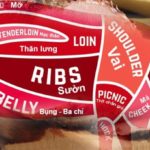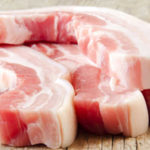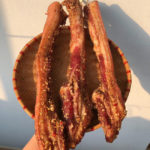Pork is a very popular type of meat in Vietnam. It is a good source of nutrients for the human body. In this article, we will share with you the different cuts of pork and how to choose the best quality meat.
1 Different Cuts of Pork
Pork Shoulder
Pork shoulder is the cut of meat from the shoulder of the pig. This cut of meat is usually thick, well-marbled, and has a good balance of lean meat and fat. It is a popular choice for many dishes due to its tenderness and flavor.
Pork shoulder is commonly used in stews, stir-fries, grilled dishes, and minced meat dishes such as stuffed or rolled meat.
The price of pork shoulder is relatively high in the market due to its high nutritional value. It contains up to 20g of protein and 148 calories per 100g of meat.
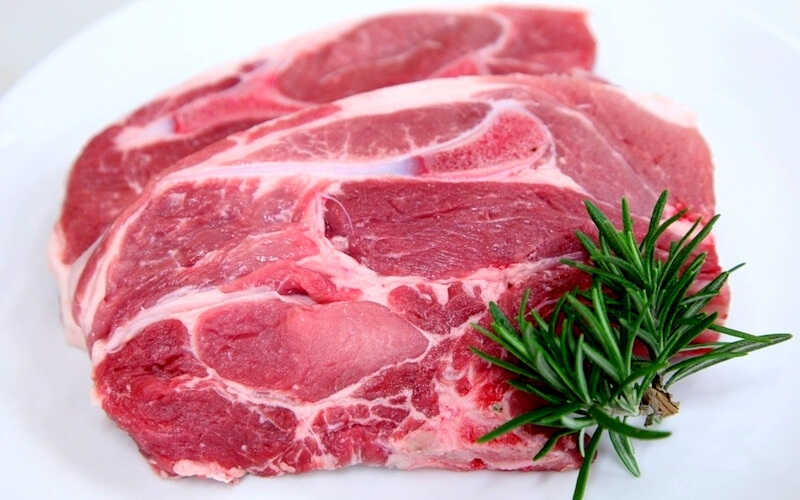 Pork shoulder is the cut of meat from the shoulder of the pig.
Pork shoulder is the cut of meat from the shoulder of the pig.
Pork shoulder is typically thick and well-marbled, making it ideal for dishes such as stews, stir-fries, or soups.
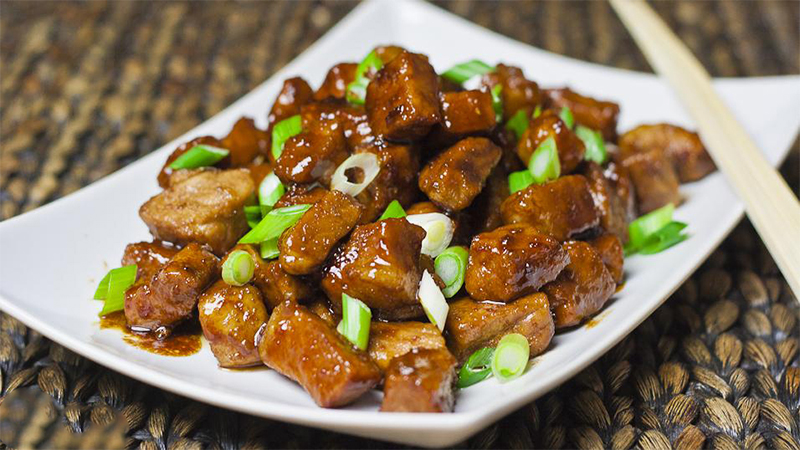
Pork Loin
Pork loin is a lean cut of meat from the back of the pig, running along the spine and towards the hind legs. It is one of the leanest and most tender cuts of pork, with a high protein content of up to 21g and 143 calories per 100g of meat.
Fresh pork loin has a deep red color similar to beef. Due to its tenderness and aroma, it is commonly used for making sausages, boiling, or stir-frying. For leaner cuts of pork loin, avoid overcooking as it may dry out the meat.
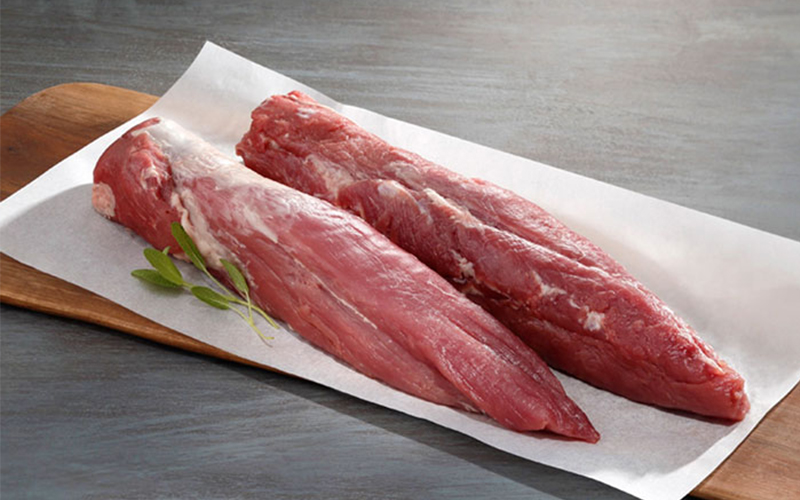 Pork loin is a lean cut of meat from the back of the pig.
Pork loin is a lean cut of meat from the back of the pig.
Pork loin is versatile and can be used in a variety of dishes such as boiled, stir-fried, deep-fried, braised, grilled, or made into pork floss.
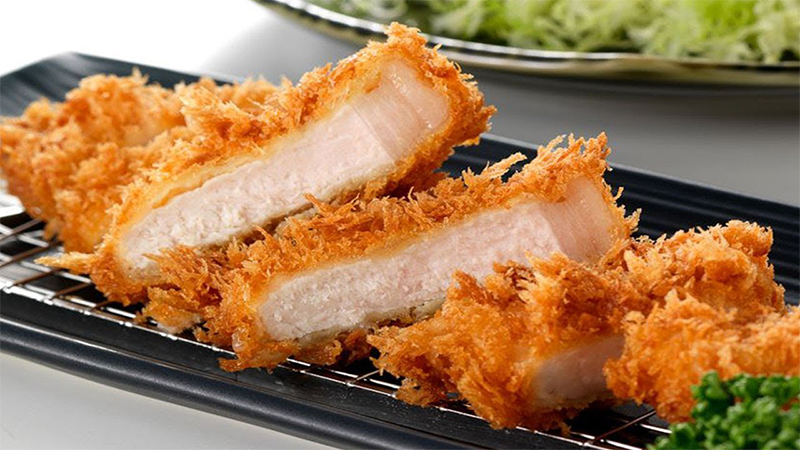 Deep-fried pork loin
Deep-fried pork loin
Pork Head Meat
Pork head meat, also known as pork jowl or head cheese, is the meat from the head of the pig. This cut of meat is characterized by its crunchy texture and includes fat and skin. The most famous dish made with pork head meat is “giò thủ,” a type of head cheese that is a favorite among many people. It is often combined with pork nose, ear, and a small amount of pork hock, wood ear mushrooms, and pepper.
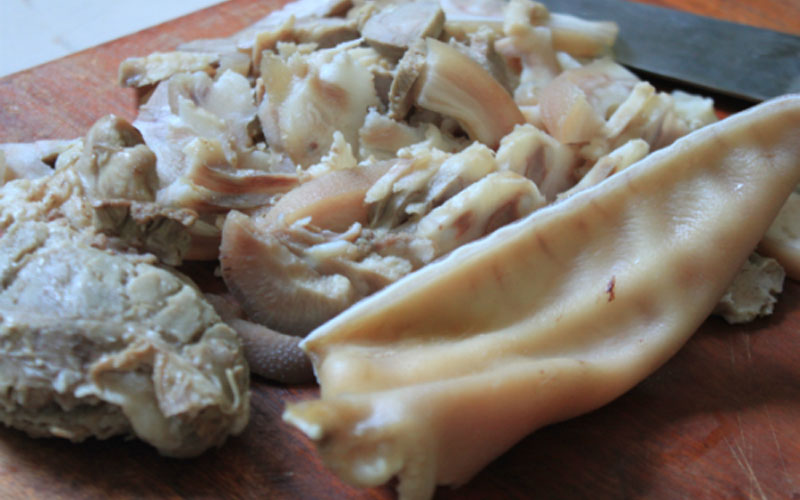 Pork head meat is the meat from the head of the pig.
Pork head meat is the meat from the head of the pig.
The famous dish made from pork head meat is “giò thủ,” a traditional Vietnamese delicacy made from a combination of pork head meat, ear, hock, nose, wood ear mushrooms, and pepper.
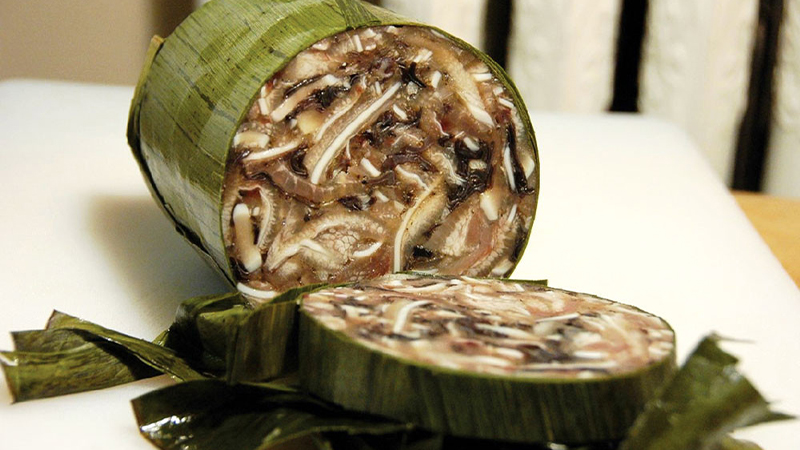 Giò thủ (Pork Head Cheese)
Giò thủ (Pork Head Cheese)
Pork Butt
Pork butt, also known as pork buttock, is the meat from the upper part of the pig’s hind leg, including both meat and fat. The fat, skin, and meat of this cut are clearly separated, and the lean meat is very thick, with no tendons, bones, or cartilage. It is commonly used for boiling or stewing.
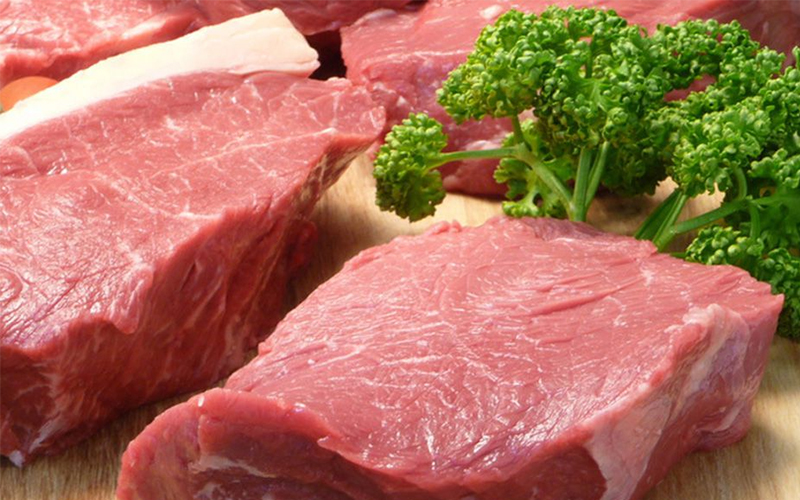 Pork butt is the meat from the upper part of the pig’s hind leg.
Pork butt is the meat from the upper part of the pig’s hind leg.
Pork butt has a good balance of lean meat and fat. It is commonly used for boiling or stewing.
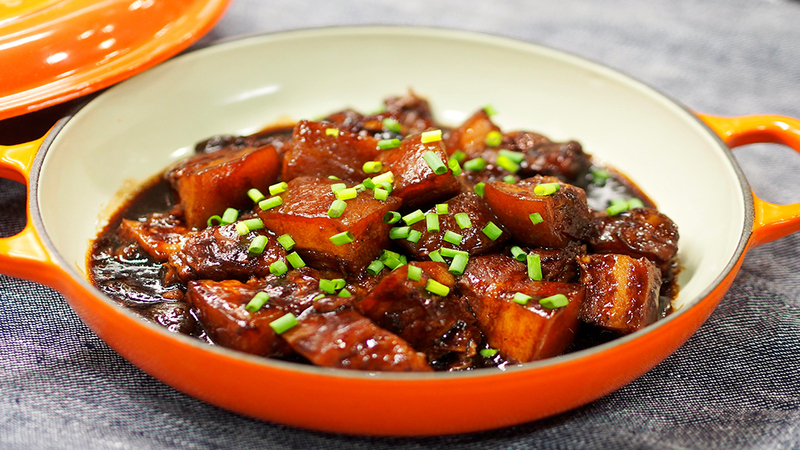 Pork butt in soy sauce
Pork butt in soy sauce
Pork Belly
Pork belly, also known as bacon, is the cut of meat from the belly of the pig. The name comes from the alternating layers of meat and fat, with the outer layer being the skin. It is commonly used for boiling, stewing, braising, frying, smoking, or roasting.
The nutritional value of pork belly is moderate, with 16.5g of protein per 100g of meat.
 Pork belly, also known as bacon, is the cut of meat from the belly of the pig.
Pork belly, also known as bacon, is the cut of meat from the belly of the pig.
Pork belly is a versatile cut that can be used in a variety of dishes. It is great for boiling, stewing, braising, frying, smoking, and especially roasting to a crisp.
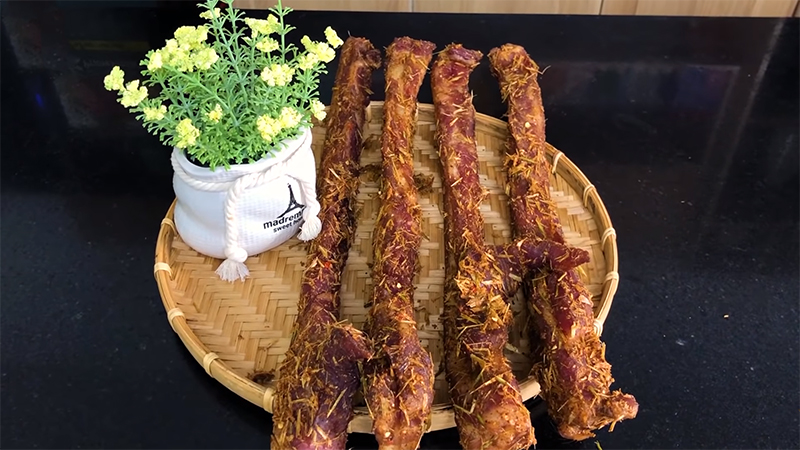 Sun-dried pork belly
Sun-dried pork belly
Pork Hock
Pork hock, also known as pork knuckle or pork shank, is the meat from the pig’s hind leg, with the hoof removed. It is a popular cut that includes rolled bundles of leg meat. It is commonly used for boiling, stewing, and smoking.
The price of pork hock is relatively high due to its sweet flavor and high nutritional value. It contains 21g of protein and provides 137 calories per 100g of meat.
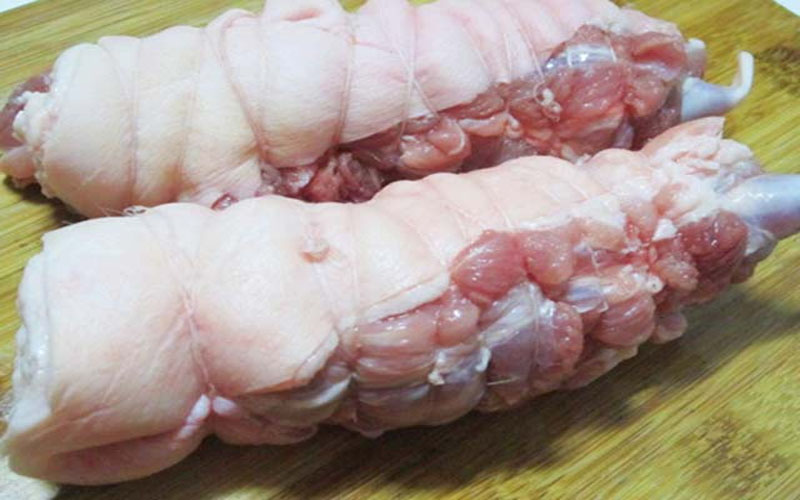 Pork hock is the meat from the pig’s hind leg, with the hoof removed.
Pork hock is the meat from the pig’s hind leg, with the hoof removed.
Pork hock is a popular choice for boiling, stewing, and smoking. It is also used in specialty dishes such as smoked hock, salted hock, and stuffed hock.

Pork Ribs
Pork ribs are the cut of meat from the pig’s rib cage and include both bone and meat. This cut is very versatile and can be used in a variety of dishes. There are several types of pork ribs:
-
Baby back ribs are small, flat bones with plenty of meat and some cartilage. They are commonly used for grilling, braised ribs, and sweet and sour pork ribs. Despite their delicious flavor, baby back ribs have a lower nutritional value, with only 15g of protein and 277 calories per 100g of meat.
-
Pork loin ribs are from the loin section of the pig and are very tasty but also expensive. This cut of meat is lean with very little fat. It is often used for making sausages, braised dishes, pan-fried dishes, or grilled pork chops for broken rice dishes.
-
Spare ribs are the hard and meaty part of the ribs, usually used for grilling.
-
St. Louis-style ribs are larger, longer, and meatier than baby back ribs. They have less meat and require longer cooking times, often used for making soups.
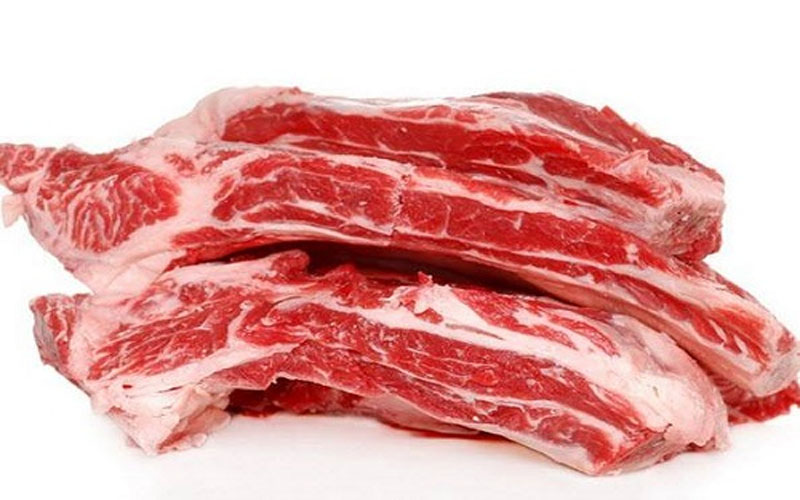 Pork ribs are the cut of meat from the pig’s rib cage.
Pork ribs are the cut of meat from the pig’s rib cage.
With pork ribs, you can create a variety of delicious dishes such as grilled ribs, braised ribs, and sweet and sour pork ribs.
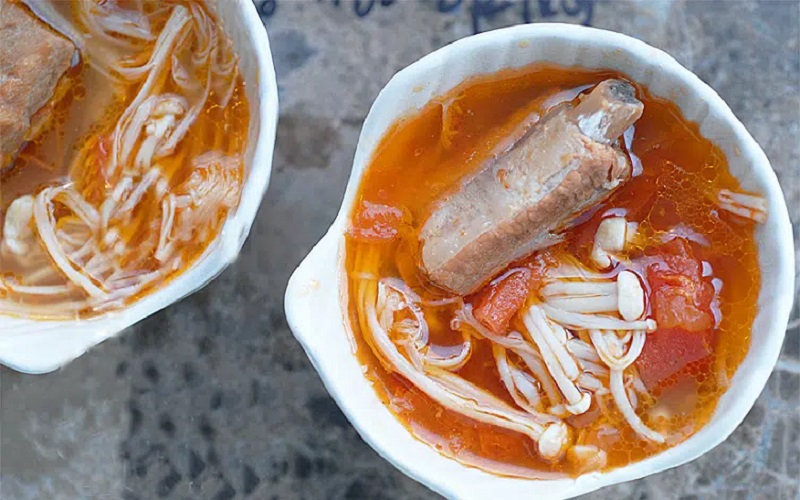 Pork ribs with king oyster mushrooms
Pork ribs with king oyster mushrooms
Pork Neck
Pork neck is the cut of meat with alternating layers of fat and lean meat. It is commonly used for stewing or frying as the fat keeps the meat moist and juicy without being greasy.
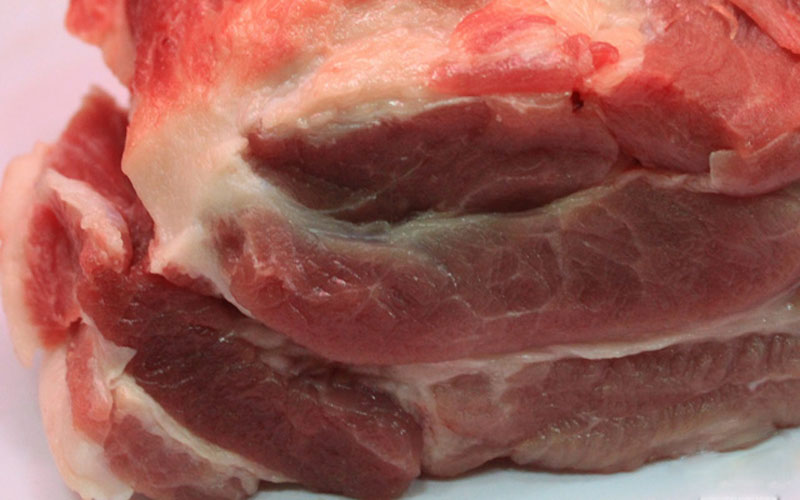 Pork neck has alternating layers of fat and lean meat.
Pork neck has alternating layers of fat and lean meat.
Pork neck can be used in a variety of dishes such as fried pork neck, braised pork neck with shrimp, stir-fried pork neck with fermented shrimp paste, kimchi, or grilled pork neck.
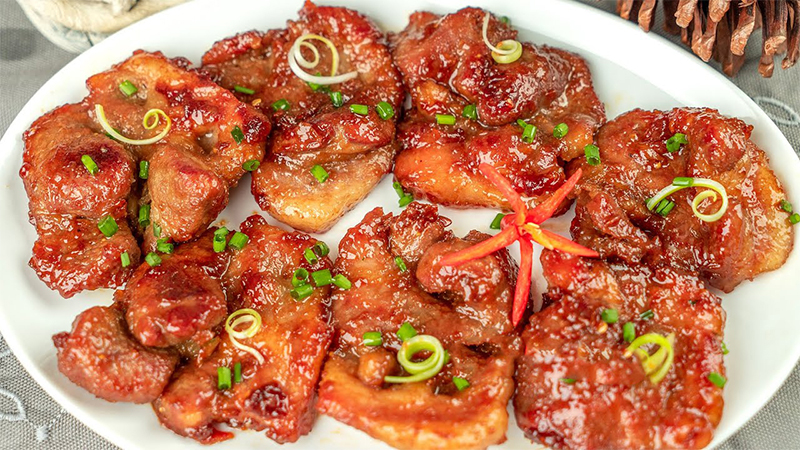 Fried pork neck
Fried pork neck
2 How to Choose the Best Quality Pork
Now that you know the different cuts of pork and their suitable dishes, the next question is how to choose fresh, tasty, and good-quality pork. Here are some characteristics to look for:
Observe the Color of the Meat
Fresh pork has a bright pink color, neither too red nor too pale. On the other hand, spoiled pork will have a pale color, a greenish tint, and a distinctive unpleasant odor.
Test the Elasticity of the Meat
High-quality pork has good elasticity and high resilience. Press your finger into the meat, and if it bounces back immediately without any liquid or sticky residue, it is a good sign.

Creating delicious and nutritious dishes from pork requires knowledge of the different cuts and how to choose the best quality meat. We hope that this article has provided you with valuable information for your daily meals.
Avoid These 7 Critical Mistakes When Grilling Pork
It is possible to grill pork to perfection if the right steps are followed. Key actions to take include selecting the correct type of pork, cutting it into suitable portions, marinating it, browning it, and avoiding overcooking. These tips and more will help ensure the flavor and tenderness of the grilled pork are just right.

























